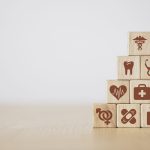Guyanna Ackison has always been a strong individual. As an active duty military nurse, she served in Operation Iraqi Freedom while raising two beautiful daughters. But one morning, Ackison woke up with the worst pain she had ever experienced. “I knew that this was not something that I could ignore,” she says.
She visited her primary care doctor, who ordered an ultrasound and found a ruptured ovarian cyst. After identifying additional cysts, her doctor referred her to a gynecologist who told her to “wait and see,” rather than take action.
Fortunately, Ackison is not the type who sits around and waits for answers. Currently a nursing student at the University of Pittsburgh and aware of her strong family history of cancer, she began researching ovarian cysts on her own. “I just had the gut feeling that there was a little more to this cyst than being a regular cyst,” she says.
ckison’s research led her to Robert P. Edwards, M.D., a UPMCgynecologic oncologist who recommended genetic counseling with specially trained counselors who interpret family history.
“Everyone talks about the genetic testing which is molecular genetic testing, but that actually can be ordered by any clinician,” Dr. Edwards said. “We strongly recommend the evaluation piece,” which is offered at both Hillman Cancer Center and Magee-Womens Hospital of UPMC.
During the genetic counseling process, Ackison needed to get medical records for her mother, who died from cancer when Ackison was only 14 years old. She believed her mother passed away from colon cancer; however, she discovered her mother kept a major secret.
“I found out my mom had ovarian cancer. And they thought it was two primary tumors, which is pretty odd,” she says.
Her genetic counselor recommended genetic testing for the BRCA gene mutation, which can indicate an increased risk of breast or ovarian cancer. But despite her family history – in addition to her mom, her mom’s sister had breast cancer and died at the age of 35 and her maternal grandfather had pancreatic cancer – the results came back as an uninformed negative. No one in her family had ever had genetic testing, so it was unclear if there was a genetic mutation in her family.
With no real way to identify her results as a true negative, Dr. Edwards diagnosed Ackison’s condition as endometriosis, which occurs when the cells that normally develop in the lining of the uterus develop outside, either along the pelvic wall, on the ovaries or in the fallopian tubes. They discussed treatment options.
“At that point in my life, I had two kids, I was recently divorced. I wasn’t dating anybody, not planning on having any more children,” she says. “My mom passed away when I was very young, and I wanted to prevent that from ever happening to my children.”
Together, they determined her best option was to have a preventive hysterectomy and prophylacitic oophorectomy, which is complete removal of the uterus and ovaries. By doing so, Ackison minimized her risk of developing cancer as she grew older.
“My daughters are probably my biggest driving force,” she says.
Post-surgery, Ackison was prescribed hormone replacement therapy because of her young age. But just a few months later, signs of endometriosis resurfaced.
An MRI and an exploratory laparoscopy found precursor lesions for clear cell ovarian cancer, which was a sign of atypical endometriosis.
“It’s likely that’s what was involved with her mother’s disease,” says Dr. Edwards. Atypical cells found in a benign or non-cancerous condition like endometriosis are “worrisome, because you have an inflammatory condition and you have the precancerous cells, which are a bad combination.”
Research has yet to determine whether or not atypical endometriosis is associated with the BRCA mutation, but it is defined as a pre-cancerous condition.
“I had gone from dodging a bullet to having these precursor lesions for organs that I didn’t even have anymore and there’s no way to test,” Ackison says.
Now, Ackison regularly undergoes surgery so Dr. Edwards can remove and biopsy the lesions, which line her abdominal wall and vaginal cuff. She also gets regular blood tests and Dr. Edwards has prescribed her a type of progesterone to try and control her condition.
“She’s a young woman who should be having estrogen for good overall health, and so we’ve been running this balancing act between keeping the condition at bay versus giving her sufficient hormonal replacement so she can function as a ‘normal’ person for her age,” he explains.
Fortunately for Ackison, her cancer risk is “essentially zero,” Dr. Edwards says.
Ackison is now focused on completing her bachelor’s degree in nursing at Pitt and would like to work in gynecologic oncology once she retires from the Army in 2019. “I definitely feel that [this] is my calling in life,” she said. She also devotes her spare time to volunteering with the Pittsburgh chapter of the National Ovarian Cancer Coalition (NOCC).
So far, Ackison had clinical rounds at both UPMC Presbyterian in neurology and Magee, where she had the opportunity to work with patients and survivors of ovarian cancer.
“It really reiterated why we’re here—why I do what I do as a nurse, and why the NOCC does what they do,” she said. “It’s for the survivors and for educating women.”
Ackison is now focused on completing her bachelor’s degree in nursing at Pitt and would like to work in gynecologic oncology once she retires from the Army in 2019. “I definitely feel that [this] is my calling in life,” she said. She also devotes her spare time to volunteering with the Pittsburgh chapter of the National Ovarian Cancer Coalition (NOCC).
So far, Ackison had clinical rounds at both UPMC Presbyterian in neurology and Magee, where she had the opportunity to work with patients and survivors of ovarian cancer.
“It really reiterated why we’re here—why I do what I do as a nurse, and why the NOCC does what they do,” she said. “It’s for the survivors and for educating women.”







